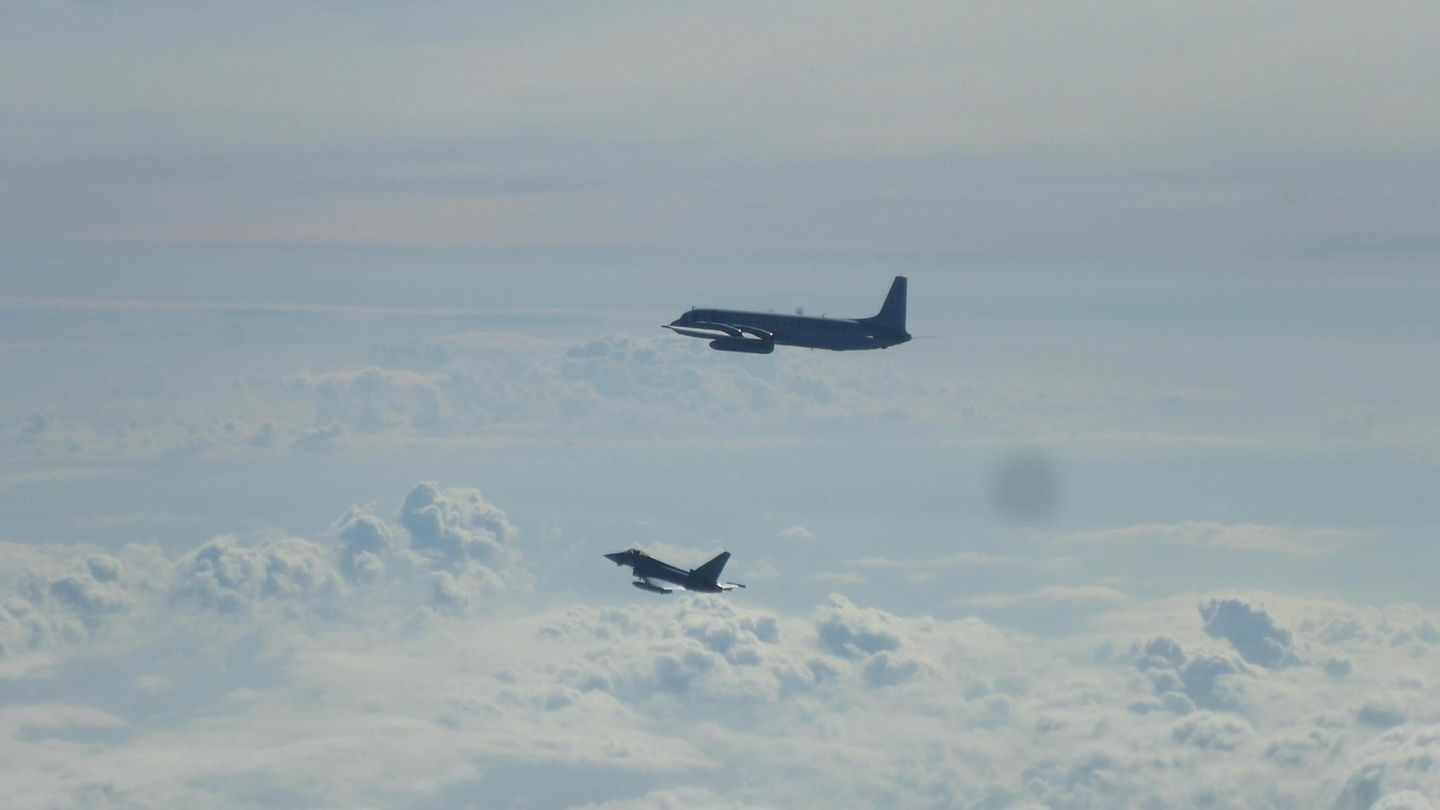Simply explained
How can NATO actually protect its airspace?
Copy the current link
Add to the memorial list
Russian airspace injuries make NATO members nervous. What can the alliance do about the Russian provocations?
Russia’s airspace injuries reinforce the tensions on the eastern flank of NATO and fuel the discussion about an appropriate reaction. Does Russia keep going to the risk of testing NATO? The alliance must find the balance between determined deterrence and unintentional escalation.
How are airspace injuries noticed?
The NATO countries observe the airspace from different positions with radar systems and bring them together into a position. Machines that fly without a radio signal (“transponder”) are also noticed. In Germany, the Air Operation Center Uedem (“Combined Air Operations Center” or CAOC) on the Lower Rhine near the Dutch border is a central military switch with tasks in NATO and for Germany.
The center also has access to information results on how to win the German Patriot systems at the Polish Airport Rzeszow. The CAOC monitors and secures the NATO air dream north of the Alps, from Iceland to the eastern flank around the clock. This also includes the missions to secure airspace in the Baltic States.
What happens to an alarm?
If a suspiciously approached aircraft is noticed, alarm rottes rise to an alarm start (“Alpha Scramble”). As a rule, there are two Eurofighter in Germany who have to be in the air within 15 minutes. “When alarm, two pilots run to their combat aircraft,” the Bundeswehr writes. NATO partners take on the task in rotation over the Baltic States, which do not have their own fighter planes.
In addition, allies have reinforcements after the recent incidents. In the future, the Bundeswehr will face four instead of just two fighter jets to take part in armed protection flights over Poland. They are stationed on the air base in Rostock-Laage. France represents three rafale fighting jets for monitoring airspace on the eastern flank, Denmark two F-16.
What do you mean, intercept, accompany, accompany?
Intercepting describes a military act that includes persecution, identifying, identifying and accompanying suspicious aircraft. In previous practice, interceptors are used to create clarity and to cause a change of course. The pilots communicate via hand signals or flight maneuvers if it is not responded to radio. A pilot flies to Cockpithöhe, the second pilot can get back behind the striking machines. It makes a difference beyond the airspace injury whether standard behavior or threatening gestures are then practiced.
What military acts are conceivable?
The pilots of the interceptors are authorized for self -defense. However, both sides have so far been considered to avoid the appearance of an attempted attack.
The Air Force of the NATO state of Türkiye shot down a Russian fighter plane Su-24 in 2015 because, according to Turkish information from Syria, it had entered Turkey’s airspace. A political ice age followed between Ankara and Moscow. However, the Baltic Sea room has a significantly greater escalation potential.
It is conceivable that NATO aircraft push down Russian machines, i.e. cause a change of direction. The flight route published by Estonia shows a straight line as a kind of abbreviation through the NATO airspace and out again. However, this is apparently a simplified graphic.
What is advised in NATO?
For the defense alliance, after the events of the past few weeks, the question arises as to how it should react. In a first answer, an operation for an even better surveillance and defense of the east flank had already been started on September 12 after the appearance of Russian drones in Polish airspace.
As a result of the new airspace injuries, however, there are now demands for further steps in particular from the affected countries. The provocations could not simply be accepted if you want to maintain credible deterrence, it is said.
What could a reaction of NATO look like?
It is likely that General Secretary Mark Rutte sends a clear message to Russia after the Article 4 consultations. It should be made clear in it that the airspace injuries are unacceptable and could lead to dangerous escalation. Ideally, further provocations would then be omitted from the Russian side – on the one hand, because NATO would have laid the latte for a military reaction with a clear warning and, on the other hand, because Kreml boss Vladimir Putin would have to fear that it would really get to do with all 32 alliance members.
Couldn’t NATO also become clearer and say: The next airspace injury is shot by fighter jets?
Theoretically, that would be possible. This would allow Putin to decide on a military tightening of the conflict even. For example, he could make Russian pilots a comparatively harmless airspace injury and then use the following shooting in order to escalate the conflict in his sense or to use the events communicatively. At the same time, there was a risk that NATO countries like Italy will withdraw their fighter jets from NATO surveillance on the eastern flank because they do not want their pilots to shoot a Russian plane on the command of the responsible NATO commander.
Dpa
YKS / Carsten Hoffmann and Ansgar Haase
Source: Stern
I have been working in the news industry for over 6 years, first as a reporter and now as an editor. I have covered politics extensively, and my work has appeared in major newspapers and online news outlets around the world. In addition to my writing, I also contribute regularly to 24 Hours World.




